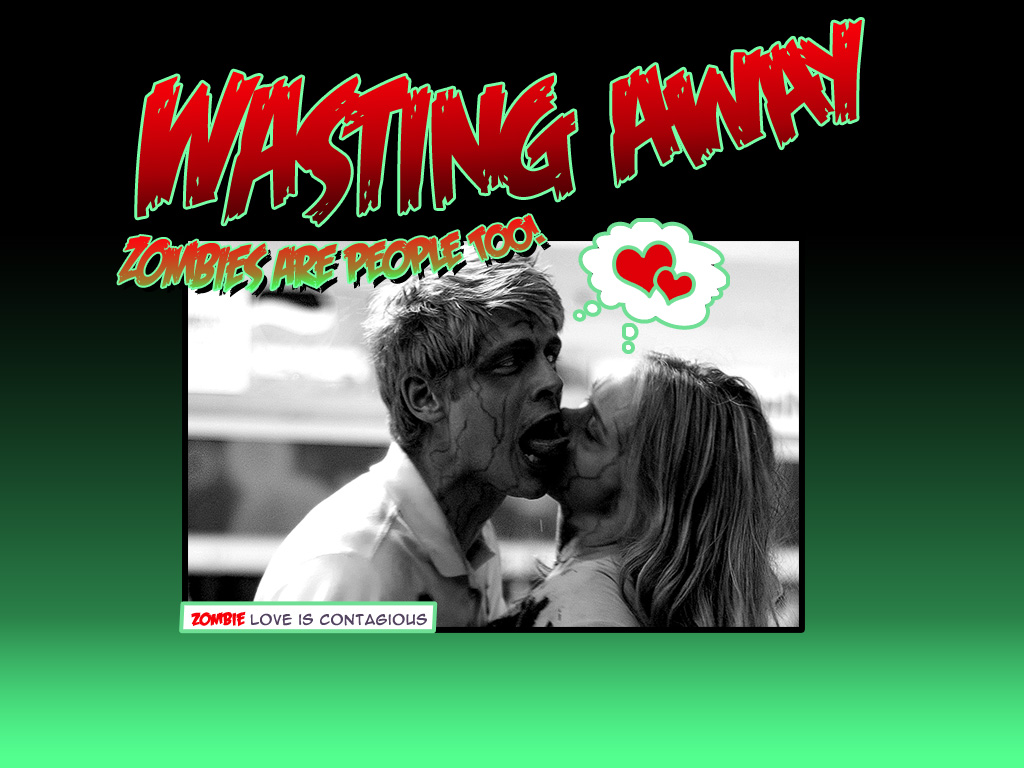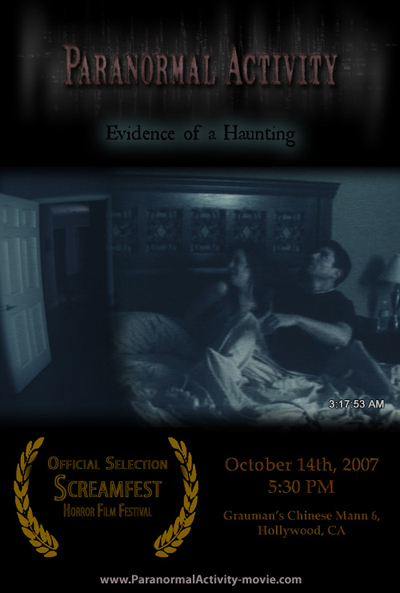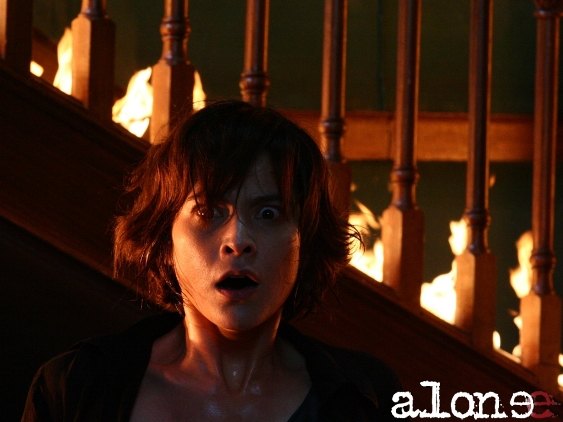
This remake of a traditional Japanese legend suggests a 1960s Hammer film: the same old story, spiced up with color, more action, and blood.
This period costume drama, from the director of the masterpiece RING, is a deliberate attempt to move away from the tropes of modern J-Horror cinema in favor of a more traditional approach to the supernatural. The generic title KAIDAN (literally Japanese for “ghosts story”) may suggest a remake of the well-known 1964 anthology KWAIDAN* (inspired by Lafadio Hearn’s famous collection of Japanese folk tales), but in fact this is a new version of THE GHOST STORY OF KASANE SWAMP (Kaidan Kasane-Ga-Fuchi), a famous legend that has been filmed many times in Japan, most notably by director Nobuo Nakagawa in 1957. In relation to his black-and-white oldie, Hideo Nakata’s remake comes across a little bit like a 1960s Hammer film: the same basic story, spiced up with color photography, more action, and the occasional spatter of blood.
KAIDAN begins with a prologue (featuring a narrator who is occasionally glimpsed, telling us the story) about a humble man who is murdered by a samurai while trying to collect a debt. The samurai later goes mad, murders his wife, and commits suicide. Decades later, the son of the samurai and the daughter of the murdered man meet in Edo and, without knowing the connection between their families, fall in love. Unfortunately, the relationship is cursed. Rui falls ill and Shinkiji, believing himself responsible for his lover’s misfortune, plans to run away. Rui appears to Shinkiji and warns that she will not stop him, but she will kill any other woman he marries; the warning takes on an added ominous tone when Shinkiji learns that, at the time she was visiting him, Rui had already passed away. Rui flees to his family village with one of Rui’s students. Along the way, Shinkiji has a vision of Rui attacking him; while defending himself, he kills his travelling companion. Shinkiji meets another woman, who falls in love with him; after initially turning down her family’s offer of marriage, he changes his mind, hoping to break the curse, but Rui’s vengeful ghost is not so easily dissuaded.
Nakata’s strength as a director of J-Horror was always his relatively straight-forward approach, which allowed the stories to develop their tension without being over-hyped with extraneous flourishes. This worked superbly in RING, which the script’s built-in time-lock, but it works less well in this period setting, with an old-fashioned story that is somewhat episodic in structure.
The prologue (the only sequence that recalls KWAIDAN, with its deliberately artificial production design and its plot details revealed mostly through narration) launches KAIDAN with a strong beginning, but the first act slow to a stand-still as Rui and Shinkiji fall in love. Satoko Okudera’s screenplay (based on Encho Sanyutei’s story) never involves us fully in the doomed love affair, so we are never invested in the ensuing tragedy. Nakata exacerbates the problem with his slow pacing of the material: instead of being swept up by the passion of the lovers, you are likely to find yourself nodding off as you wait for the supernatural thrills to finally kick in.
When the finally do, they are almost worth the wait. The revelation that Rui was a ghost when she appeared to Shinkiji with her warning is a standard trope in traditional Japanese ghost stories, but it remains effective (there is an especially nice “jump scare,” involving a hand that appears suddenly from a corner of the frame, proving . Later scenes of Shinkiji battling with ghosts who turn out to be human beings (whom he kills, thinking they are Rui) recall Nakagawa’s approach to supernatural manifestations; although not quite as effective, they benefit from the occasional judicious use of computer-generated imagery. Especially memorable is the spirit who emerges – head downward – from a churning lake of water that has replaced a room’s ceiling. (It’s as if Nagata is trying to prove that the water imagery he used in his American effort,THE RING 2, really can work if done right.)
As much as KAIDAN‘s final act improves upon what preceded, it ultimately lets the viewer down. Shinkiji – at first a sympathetic, doomed figure – loses audience empathy as he repeats his same mistake and over. No doubt the idea is to show the curse taking its toll upon him morally, as the horrors he has suffered turn him into something of a monster himself (in seeing what happened to him, we get some understanding of how his father could have gone mad with fatal results). Unfortunately, these sequences go on past the point that we stop caring. When the curse is finally fulfilled, we feel more relief than regret.
There is a pretty decent final battle, with Shinkiji fending off the posse come to arrest him for his latest homicide. In the tradition of move climax’s, he can’t go down easily, so this simple tobacco salesman is suddenly handling himself like a skilled warrior. Fortunately, the actor’s performance sells the scene; he looks just as surprised as anybody, and we have to assume the curse is still at work, perhaps imbuing him with his father’s skill.

KAIDAN ends on a particularly haunting image – which, ironically, borders on the absurd in its surreal combination of horror, beauty, pathos, and romance. It’s an excellent example of the power of a good visual, providing a satisfactory denouement to the emotional turmoil of the tragic tale’s otherwise downbeat and unsatisfying ending.
Although KAIDAN must be gauged an overall disappointment from the director who delivered the seminal masterpiece RING, it does have redeeming features. The story is too slow for fans of modern J-Horror, but those with a taste for a more traditional approach should find the film interesting an interesting pastiche of older classics. And truth be told, even with its pacing problems, this KAIDAN is nowhere near as tedious as the 1964 alleged classic KWAIDAN.
KAIDAN (“Ghost Story,” 2007). Directed by Hideo Nakata. Screenplay by Satoko Okudera, story by Encho Sanyutei. Cast: Kumiko Aso, Takaaki Enoki, Reona Hirota, Teisui Ichiryusai, Mao Inoue, tae Kimura, Taigi Kobayashi, Hitomi Kuroki, Ken Mitsuishi.
FOOTNOTE:
- Regarding the difference between “kaidan” and “kwaidan,” the latter appears to be a variant spelling unique to Lafcadio Hearn’s collection of stories.


 RETURN TO HOUSE ON HAUNTED HILL is a disappointing sequel to the surprisingly enjoyable 1999 remake of the 1958 William Castle production, starring Vincent Price. It’s hard to imagine what Castle and Price would have thought of this sequel (no, it’s pretty easy, actually; they would have hated it), but if you’ve ever wondered what RAIDERS OF THE LOST ARK would have been like if Lucio Fulci had directed it, here’s your chance to find out: there’s almost enough blood to fill the gaping plot holes – and that’s saying something.
RETURN TO HOUSE ON HAUNTED HILL is a disappointing sequel to the surprisingly enjoyable 1999 remake of the 1958 William Castle production, starring Vincent Price. It’s hard to imagine what Castle and Price would have thought of this sequel (no, it’s pretty easy, actually; they would have hated it), but if you’ve ever wondered what RAIDERS OF THE LOST ARK would have been like if Lucio Fulci had directed it, here’s your chance to find out: there’s almost enough blood to fill the gaping plot holes – and that’s saying something.




